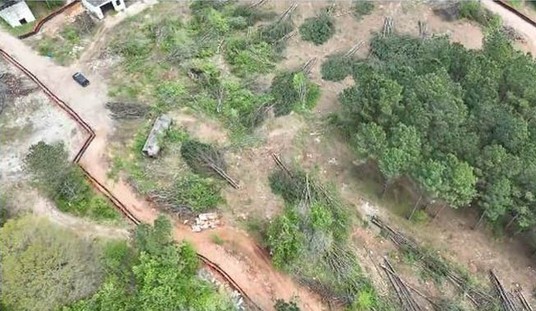Southern California and much of the southwest is in the grips of a massive and apparently persistent drought. There’s no point in arguing about that. Of course, whenever a crisis arises, it gives politicians a chance to do what they like best… impose more regulations.
Standing in a brown field that would normally be smothered in several feet of snow, Gov. Jerry Brown on Wednesday ordered cities and towns across California to cut water use by 25% as part of a sweeping set of mandatory drought restrictions, the first in state history.
The directive comes more than a year after Brown asked for a 20% voluntary cut in water use that most parts of the state have failed to attain, even as one of the most severe modern droughts drags into a fourth year. It also came on the day that water officials measured the lowest April 1 snowpack in more than 60 years of record-keeping in the Sierra Nevada.
Of course, a problem like this can’t show up without the usual railbirds chiming in about how this is obviously yet another demonstration of anthropogenic global warming. I noticed this one today from the author of Zandar vs. the Stupid.
Deadly flooding in the driest desert on Earth in Chile, California's massive drought and water restrictions. But climate change is a myth.
— Zandar (@ZandarVTS) April 2, 2015
Southern California has been in the process of running out of water for decades (if not longer) and the current drought is simply amplifying the effects and hastening the decline. I’ve been reading dire (and accurate) predictions about this issue for decades. Nearly twenty years ago there were cautionary tales coming out which discussed the fact that the region was essentially a desert when settlers began moving in and even the relatively small population in the nation’s early history already dwarfed the available natural water supplies. (This is from 1998, long before the current drought cycle.)
Not that we aren’t preoccupied with the issue of future water supplies for a good reason. In the LA Basin alone, we have approximately 6% of California’s habitable land but only .06% of the State’s stream flow — yet we hold over 45% of the State’s population. And if the population projections are to be believed, the entire southland is “scheduled” to grow from our current 16 million to over 24 million people. When policy questions are asked about whether Southern California can support this level of growth, the issue of greatest concern is not traffic or air quality or even quality of life, it is water. And the predominant question asked is “where will this water come from?”
Our water fears are not new. Since the pueblo days of Los Angeles, the lack of local water resources has been seen as the primary problem for the southland’s economic future. All plans for the development of the region have hinged around schemes to secure new water supplies — a fact recognized by Carey McWilliams, the pre-eminent historian of the southland, who wrote in 1946 that “God never intended Southern California to be anything but desert…Man has made it what it is.”
Going back to earlier in the last century, we find that the original reason that Hollywood voted to join the municipality of Los Angeles in 1910 was to gain access to their water rights. The area was already being drained by the growing population and would require later river diversions to feed the thirst of the area. The addition of a drought is a much harsher blow for an artificially created habitable zone.
But is the drought situation something new? Actually, not only the western portion of North America, but central and South America have apparently been experiencing these same cycles for as long as human beings have been around. One of the earliest recorded, but most massive examples was the curious disappearance of the million plus strong civilization of the Mayans more than a thousand years ago. What happened to them? Yep… a series of crippling, decade long droughts.
Identifying annual titanium levels, which reflect the amount of rainfall each year, the Swiss and U.S. researchers found that the pristine sediment layers in the basin formed distinct bands that correspond to dry and wet seasons. According to the scientists, there were three large droughts occurring between 810 and 910 A.D., each lasting less than a decade.
The timing of the droughts matched periodic downturns in the Maya culture, as demonstrated by abandonment of cities or diminished stone carving and building activity.
Experts say the Maya were particularly susceptible to long droughts because about 95 percent of their population centers depended solely on lakes, ponds, and rivers containing on average an 18-month supply of water for drinking and agriculture.
And according to the lake bed core samples they’ve taken, the drought which took out the Mayans wasn’t a one time event.
Scientists have found that the recurrence of the drought was remarkably cyclical, occurring every 208 years. That interval is almost identical to a known cycle in which the sun is at its most intense every 206 years. Nothing suggests the Maya knew anything about the sun’s change in intensity.
See? If only those pesky Mayans hadn’t been burning all of that coal and oil to power their dirty, industrial factories they’d probably still be down there today chopping out the hearts of their enemies. Ah… good times, my friends.








Join the conversation as a VIP Member